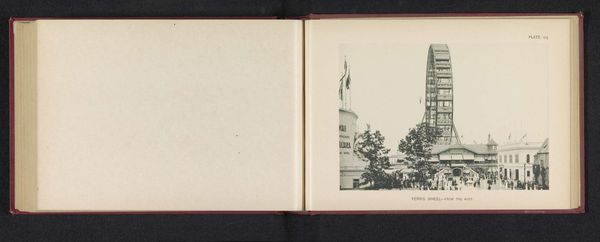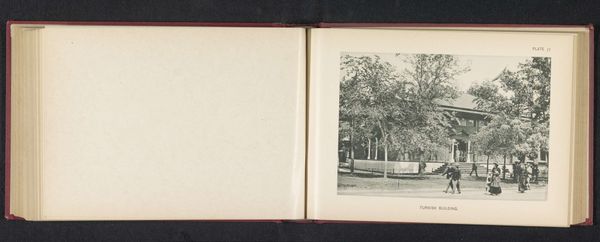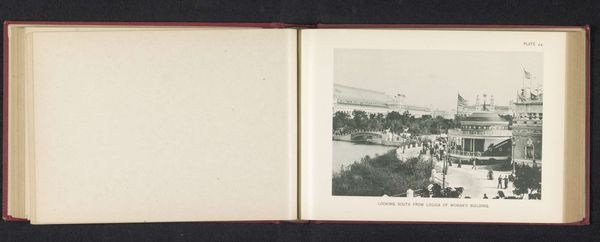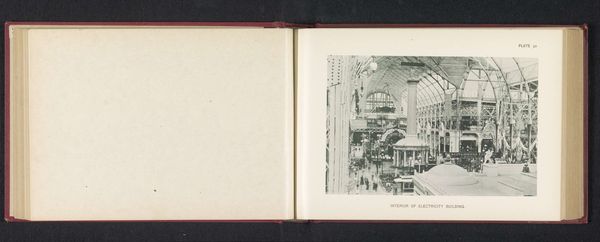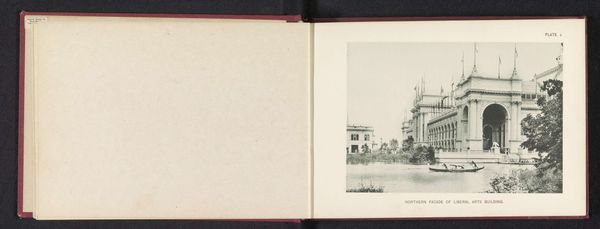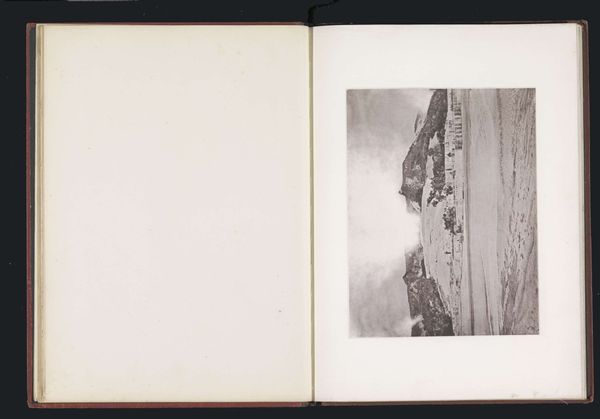
Gezicht op de straat waaraan de paviljoens van de staten staan tijdens de World's Columbian Exposition in Chicago in 1893 1893
0:00
0:00
Dimensions: height 129 mm, width 190 mm
Copyright: Rijks Museum: Open Domain
Editor: Here we have a photograph from 1893 by Charles Dudley Arnold. It captures a street view at the World's Columbian Exposition in Chicago, with grand buildings lining the avenue. It’s amazing how a single image can encapsulate such a significant moment in time. What stands out to you in this photograph? Curator: What I see is an archive, really. Think about it. The World's Columbian Exposition was a celebration of progress, but it conveniently obscured a lot of the era's socio-political tensions, especially regarding race and labor. How does the image’s presentation of grand architecture and crowds align with, or perhaps deliberately contradict, the realities of the time, such as the rise of industrial inequalities? Editor: That's a really interesting point. I guess I was initially caught up in the spectacle, but now I see the potential for a much deeper reading. You mentioned racial and labor tensions; did the fair itself reflect these imbalances in any way? Curator: Absolutely. While promoting American exceptionalism and innovation, the fair largely excluded contributions and perspectives of marginalized communities. In light of that, what happens if we scrutinize this idealized "cityscape"? Whose voices are amplified, and whose are conspicuously absent from this historical narrative being presented here? Editor: So, looking at it this way, the photograph isn't just a record; it’s an argument, consciously or unconsciously promoting a specific worldview. Is that fair to say? Curator: Precisely! It prompts us to examine the complex interplay of power, representation, and historical memory, questioning whose stories are being told and how, alongside the stories that remain untold. What considerations might we need to undertake if we’re to address photography as a critical form of inquiry? Editor: This really changes how I view historical photography. I thought it was just capturing moments, but now I understand that it can also perpetuate particular ideologies. Thank you. Curator: Indeed. Recognizing those biases is key. There’s power in learning from this picture, as well as thinking critically about its contents.
Comments
No comments
Be the first to comment and join the conversation on the ultimate creative platform.
